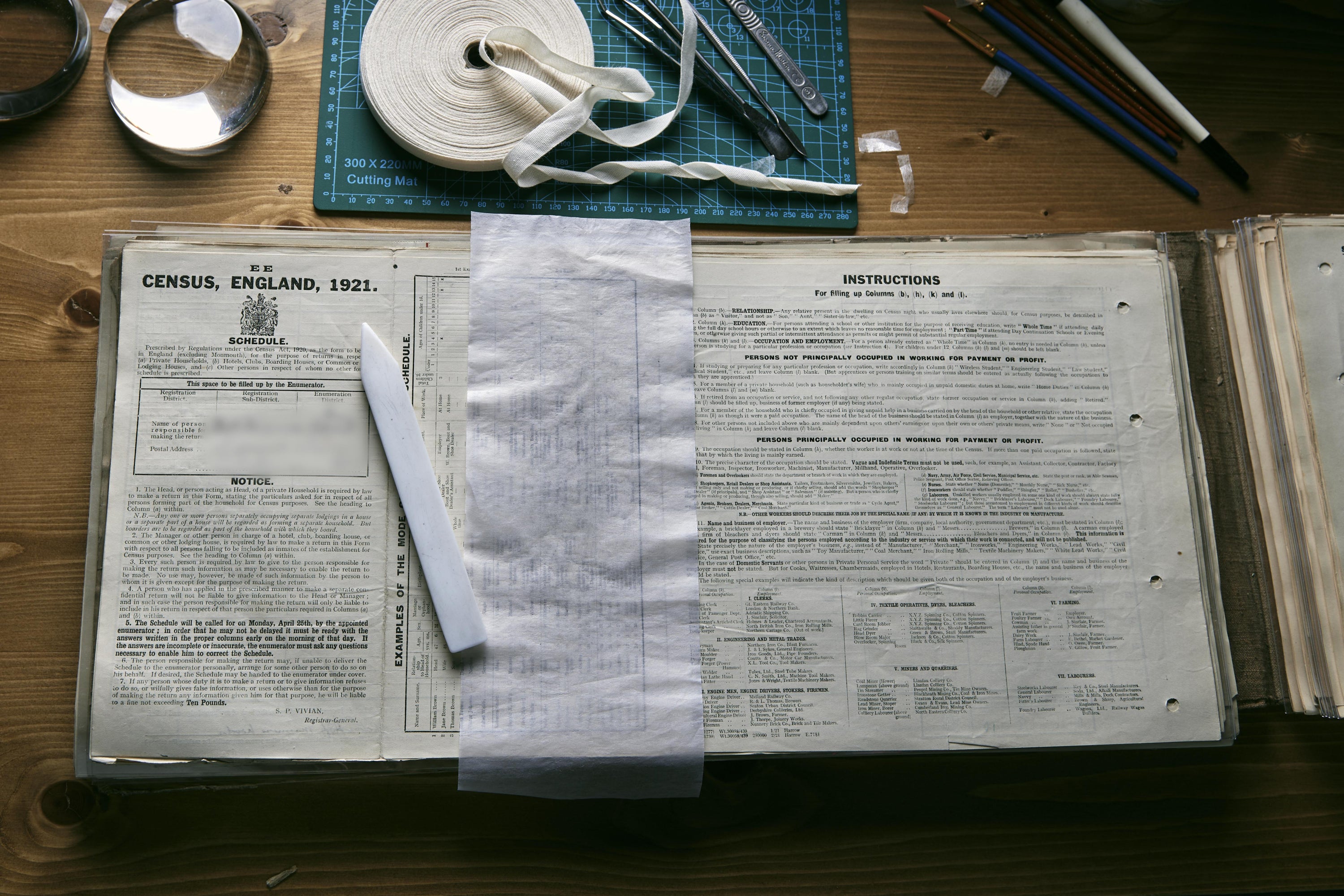How to access the 1921 census online
Life in England and Wales a century ago defined by enormous social upheaval, mass unemployment, a housing crisis, the Spanish flu pandemic and bitter legacy of war

The UK National Archives has published the 1921 census for England and Wales, providing a fascinating glimpse at life in Britain a century ago.
The records were compiled by a staff of 38,000 on 19 June 1921, who questioned the occupants of 8.5m households across the country about their ages, jobs and birthplaces. They visited army camps, prisons, hospitals, boarding schools and workhouses as part of their mission to collect valuable data on the makeup of the home nations.
What makes the publication of these documents so significant is that they will be the last we will see until 2052, with the advent of the Second World War meaning the 1931 records were destroyed by fire and the 1941 census abandoned altogether.
The 1921 records are available to view in person at the National Archives’ reading rooms in Kew, at Manchester Central Library and at the National Library of Wales in Aberystwyth. Alternatively, you can view them at Findmypast and sign up for a 14-day free trial.
The documents reveal details of more than 38m people in accordance with the conditions of the 1920 Census Act, which had made participation compulsory, and present a Britain still reeling from the aftershock of the First World War, facing enormous social upheaval, mass unemployment, a housing crisis and the Spanish flu pandemic.
The toll of the Great War on the male population is revealed in the statistics, which found that the Britain of 1921 was home to 1.7m more women than men.
There were 1,096 women for every 1,000 men, with the biggest discrepancy evident in the 20-45 age bracket, which had made up the vast majority of those sent to the battlefields across the Channel.
More than 730,000 children were meanwhile recorded as fatherless, leaving women, newly able to vote and increasingly accustomed to demanding industrial work thanks to their efforts between 1914 and 1918, heading up households while struggling with bereavement or caring duties, with so many of those veterans who did return from the fighting left with permanent disabilities.
One ex-serviceman, who is aged 43 but whose name is sadly illegible, writes poignantly in his entry: “Remember no pension or out of work donation received. Fought since 1914 + wounded twice. This case is a disgrace to the nation so called England.”
Public health was also poor, with the 1921 census reporting a 35 per cent rise in hospital admissions 10 years on from its previous instalment, attributable to both the treatment of wounded soldiers and the viral outbreak, evident in the number of pages of the records that are smeared with stains from disinfectants.
The number of deaths in Britain had exceeded the number of births in 1918 for the first time since records began in 1801 and the Spanish flu is ultimately thought to have cost as many as 228,000 British lives.
The turmoil of the time is reflected in the pages of the 1921 census, which were lovingly and painstakingly organised and digitised over the course of three years by the National Archives in partnership with the genealogy website Findmypast, with many entries containing eccentric handwritten notes and even cartoons.
One submitted by an Arthur Vince, evidently a satirically-minded civil servant from London, features a drawing of top-hatted Whitehall fat cats taking tea while outlining potential “cannon fodder” for the next war, which he forecasts as coming in 1936.
Another, from one Eleanor Wakeley, contains a diatribe against David Lloyd George’s Liberal government for raising taxes while awarding knighthoods to “those who sit on velvet chairs”.
Others call on the prime minister to build more affordable houses.
Mary McKee, head of content publishing operations at Findmypast, explains: “People were angry that they had been promised a postwar ‘land fit for heroes’ by the government but were, instead, experiencing mass unemployment and poor housing.”
Jessamy Carlson, a census specialist at the National Archives, meanwhile told The Times: “Some of the census reports say ‘we’re really struggling for work’ - this is their only recourse of communication. It’s quite sad that people were trying to tell the authorities life was really hard but nothing that could be done about it.”
But the records also contain plenty of humour, with respondents often joking about their children or pets, only to have their remarks huffily crossed out by bureaucrats.
In addition to the details of ordinary citizens, the records also feature such notable names as Sir Arthur Conan Doyle, JRR Tolkien, Beatrix Potter, the young Alan Turing and the even younger Captain Tom Moore, the 2020 NHS fundraising hero then just a one-year-old infant, as well as the Royal Family under King George V.
The pages further contain more than their fair share of squashed beetles, with 532 insects accidentally preserved for the ages among the files.
Subscribe to Independent Premium to bookmark this article
Want to bookmark your favourite articles and stories to read or reference later? Start your Independent Premium subscription today.

Join our commenting forum
Join thought-provoking conversations, follow other Independent readers and see their replies